 This information has been archived for reference or research purposes.
This information has been archived for reference or research purposes.
Archived Content
Information identified as archived on the Web is for reference, research or recordkeeping purposes. It has not been altered or updated after the date of archiving. Web pages that are archived on the Web are not subject to the Government of Canada Web Standards. As per the Communications Policy of the Government of Canada, you can request alternate formats on the "Contact Us" page.
Canadian Forces Transformation
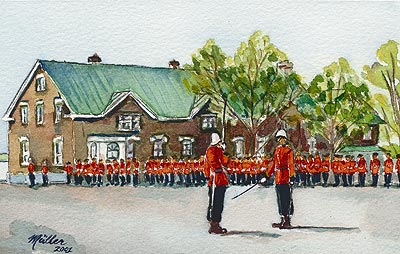
Painting by Monica Muller
Cadets on Parade.
Professionalism and Leadership: Requisite Proficiencies For CF Transformation
For more information on accessing this file, please visit our help page.
Introduction
The new Defence Policy Statement, issued in early 2005, provides clear policy goals upon which new missions, responsibilities and challenges in the battlespace of the 21st Century are based. Concurrently, the Chief of Defence Staff (CDS) General Rick Hillier generated a new and compelling vision for the Canadian Forces (CF) – a vision calling for a transformation of the CF to meet the asymmetrical threat following 11 September 2001. This vision included changing the way the Canadian Forces is structured, equipped, trained and educated to execute military missions. At the heart of this vision is a new focus on Canada as an operational theatre similar to any other operational theatre – organized and commanded by one joint force commander – as opposed to a number of command arrangements existing from previous historical developments. From an international perspective, new operational level headquarters were established to shape Canadian contributions to international missions. This initiative will create a more unified and joint expeditionary Canadian force, enabling Canada to have a bigger footprint in international operations and more influence in international affairs.
Within this strategic context, the CDS has identified six key principles applicable to the transformation efforts. These principles will guide the reshaping and renewal of CF culture, and will create a shared ethos fundamental to a CF that is relevant, responsive and effective in an increasingly unstable and volatile strategic environment. Not surprisingly, recently created CF professional and leadership doctrine (Duty with Honour, the Profession of Arms in Canada; Leadership in the Canadian Forces: Doctrine; and Leadership in the Canadian Forces: Conceptual Foundations) fully supports this new transformation agenda. Furthermore, this article will propose a professional development system to meet the CF professionalism and leadership requirements for mission success in an ever-changing, complex and modern battlefield.
Six Principles of Transformation
The six principles identified by the CDS are summarized as follows:
- Canadian Forces Identity. Our first loyalty is to Canada, and all service personnel must look beyond their environment and unit affiliations to identify more closely with the CF as a whole.
- Command Centric Imperative. This principle imposes the requirement to establish a distinct and unambiguous chain of command that integrates strategic, operational, and tactical decision-making throughout the CF and clearly separates line and staff functions.
- Authorities, Responsibilities, and Accountabilities. Commanders must be provided with a clear articulation of their assigned authorities, responsibilities, and accountabilities, so they, in turn, can provide equal clarity in the provision of their guidance to subordinate commanders.
- Operational Focus. The need for operations and operational support to take primacy over all other activities within the Canadian Forces, particularly at the strategic level where departmental, corporate and CF priorities intersect.
- Mission Command. In essence, mission command spells out the dynamic and decentralized execution of CF operations, guided by a clear articulation and understanding of the overriding commander’s intent. Mission Command also permits a range of discretionary power within the commander’s intent at the lowest levels on the battlefield.
- An Integrated Regular, Reserve and Civilian Canadian Forces. This principle encourages a more integrated regular, reserve, and civilian personnel effort, where virtually every CF structure is closely integrated to ensure the best utilization of appropriate skills and experience at every level.

Figure 1 – Professionalism and the Professional Construct
Professionalism
To understand fully how Duty With Honour and the Leadership in the Canadian Forces manuals support CF transformation, it is necessary to first understand the Canadian Forces’ professional construct and how it forms the foundation for the CF’s new leadership doctrine. Military professionalism is defined in terms of four attributes: responsibility, expertise, identity and professional ideology. Their relationship is depicted below.
Note that the profession of arms in Canada operates only in accordance with governmental direction, and, it is always subordinate to civilian political control. That is to say, its jurisdiction is defined by these two factors.
The attribute of responsibility really consists of two broad obligations. First, the military professional, in response to the societal imperative, is responsible to government and the Canadian people for the defence of Canada and Canadian interests at home and abroad. In response to the functional imperative, the members of the CF are responsible for the health of the profession to ensure it is capable of successfully executing the function of the profession of arms – the ordered application of military force in accordance with governmental direction. The first responsibility makes the CF relevant to Canadians and answerable to the government. The second responsibility makes the CF effective.
The attribute of expertise consists of all of the knowledge, skills and techniques necessary to fulfill the function of the profession. As discussed in Duty With Honour, this expertise is made up of three components – the core or common body of military knowledge, supporting knowledge and specialized knowledge.
The attribute of identity points to the unique nature of the profession of arms. Military professionals exemplify this uniqueness, realizing that while they will always be citizens, for as long as they wear the uniform, they will never be civilians. Equally important in the Canadian profession of arms, there is a hierarchy of identities, ranging in ascending order from branch, to service, to the Canadian Forces. Thus, the professional construct speaks powerfully to Principle 1 of CF transformation: from an environmental to a CF culture.
The fourth attribute of Canadian military professionalism, professional ideology, is critical. Adherence to this ideology binds the profession together and creates a common bond across all Services. It is the very basis for integrated operations. Professional ideology is defined as the claim to a specialized, discretionary, theory-based body of knowledge, authoritative in a functional and cognitive sense, and a transcendental value that adjudicates how that knowledge is applied.
The first component – theory-based knowledge – is represented by the General System of War and Conflict comprising policy, strategy, operational art and tactics. All of the expertise contained in the professional construct is integrated into this framework at the appropriate level. It is only when CF military professionals completely master this system at the relevant level and rank that the Force can move from an institutional (bureaucratic/administrative) to an operational focus in accordance with Principle 4.
The concept of discretionary knowledge is very important, not only for a complete appreciation of the nature of this knowledge, but also in relation to the CF transformation principles. Professional ideology requires members to hone their professional judgment – the quintessential characteristic of a profession – to judge properly how, when and where to apply military force. A high degree of confidence on the part of strategic leaders that subordinate leaders possess this professional judgment is required to give effect to Principle 5 – Mission Command.
The second component of professional ideology, the transcendental value, is, in fact, the Canadian military ethos. This ethos consists of three elements – Beliefs and Expectations of Military Service, Fundamental Canadian Values, and the four core military values of Duty, Loyalty, Integrity and Courage. Although Service differences allow for some ‘customizing’ of the ethos to accommodate environmental differences, basically, this professional ethos applies to all members of the profession of arms; that is to say, all members of the CF Regular contingent and Primary Reserve. Therefore, understanding, applying, and, indeed, living this ethos is essential for adherence to Principle 1 – from environmental to CF culture. It also applies to Principle 6 – the requirement to forge a strong, ‘single solution’ team, made up of the Regular and the Reserve Forces, as well as civilian colleagues in the Department of National Defence (DND).
 |
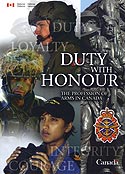 |
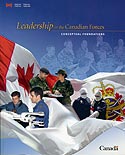 |
In the case of Public Service employees, the ethos allows these ‘Defence Teammates’ to better understand the nature of military professionalism in Canada, and, thus, to more readily build the strong military/civilian relationships required. Furthermore, by comparing military professional ideology with the professional ideology at the core of the Canadian Public Service, both sides of the equation can identify common ground, such as Canadian values – therefore explicitly strengthening mutual respect and trust.
It is, of course, Canadian Forces leaders at all ranks who will deliver CF transformation in accordance with the six transformation principles. The professional construct provides the foundation for the new CF Effectiveness Model discussed below. It does so because the military ethos component of CF professional ideology forms the core of the model, infusing the primary leadership, and enabling outcomes with the values, norms and expected behaviours required of all leaders.
Canadian Forces Leadership Doctrine
As companion documents to Duty with Honour: The Profession of Arms in Canada; the Leadership in the Canadian Forces: Doctrine; and Leadership in the Canadian Forces: Conceptual Foundations manuals integrate key ideas about Canadian military professionalism with CF leadership doctrine. This integration is best captured in the phrase ‘duty with honour’. A leader’s duty is to serve, and to effectively lead, the defence mission. A leader’s responsibility is to perform with honour, and CF leadership doctrine stipulates that leaders are to perform their duties in accordance with the civic, legal, ethical, and military values embraced by the military ethos. Since our leadership is to reflect Canadian values and Canadian military beliefs, leadership clearly supports the first principle of Canadian Forces identity and the need to look past environment, component or unit affiliations for the greater good of the CF and Canada. Conduct with honour clearly supports a transparent organization with straightforward guidelines on authorities, responsibilities and accountabilities – such as those articulated in Principle 3. Canadian Forces leadership is defined in terms of mission success, thus supporting Principle 2, a command-centric imperative, and Principle 4, operational focus.
While previous definitions of leadership addressed the art of influencing others by formal authority or personal attributes to complete a task, the new CF definition of effective leadership has a number of components that support transformational goals. In the manuals, effective Canadian Forces leadership is defined as directing, motivating, and enabling others to accomplish the mission professionally and ethically, while developing or improving capabilities that contribute to mission success. This definition emphasizes mission success, thereby supporting the operational focus required in CF transformation. The definition is values-based, thus supporting the concept of loyalty to Canada and the Canadian Forces first, before any environmental or unit affiliations. The new definition emphasizes teamwork and motivating others to engage in developing or improving capabilities, thus supporting the mission, all in a dynamic of transformation. The definition also should be interpreted as supportive of improving capabilities through means such as an integration of the regular, reserve, and civilian components into a team, resulting in maximum effectiveness. The new definition of leadership, then, supports many elements of CF transformation, as it is defined in the six principles.
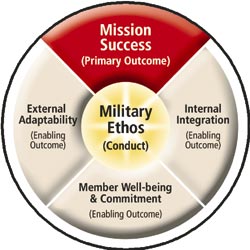
Figure 2 – CF Effectiveness Model
The leadership manuals also address CF Effectiveness, that is, that collection of necessary institutional outcomes that are the responsibilities of CF leaders. An effective CF is defined in terms of four competing outcomes and conduct values: mission success, internal integration, external adaptability, and member well-being and commitment, and they constitute organizational effectiveness. The addition of a military ethos infuses these outcomes with professional standards and conduct values. Accordingly, institutional / CF effectiveness equals organizational effectiveness and professional effectiveness. These dimensions are illustrated below.
Mission success expresses the outcome of primary importance to the CF, and it is included in the operational focus required for transformation. The primacy of operations that drive collective planning and action, and the unlimited liability that members willingly assume through military service, are a direct consequence of the over-riding importance placed upon mission success as an institutional value.
Internal integration reflects a concern for the effective coordination of in-house functions and processes, and the achievement of teamwork and cohesion among people who make up a unit or organization. All those throughout the CF must understand that new teams and networks are designed to achieve the primary outcome of mission success. A more internally integrated structure permits clearer and more accountable command arrangements, with reduced emphasis on matrix decision-making, in direct support of mission success. Thus, the creation of clear and accountable operational level headquarters will enable greater focus and effort towards mission success.
Member well-being and commitment signifies a concern for people who serve in the Canadian Forces, and they demonstrate support for the care and full development of all members. In exchange for well-being, commitment is expected from individual members and from senior leaders and policymakers to support missions. These dimensions of CF effectiveness extend to the principle of an internal integration of regular, reserve and civilian members into teams.
External adaptability reflects a concern for the external operating environment and the need to anticipate and adapt to changing conditions, which lie at the heart of CF transformation. Strong defence teams, consisting of military members and civilians from DND, will need to be built to adapt to the many changing circumstances of the new security environment. This is entirely compatible with Principle 6 of transformation, and involves an integrated approach to the regular, reserve, and civilian components of DND.
Finally, military ethos encompasses values that describe and define professional conduct, and is, in itself, a collectivity of individual serving members’ professional ideology. A high degree of trust amongst subordinates, peers and superiors is required to infuse these values throughout the effectiveness outcomes.
In the past, leadership tended to focus on the heroic efforts of higher-ranking individuals and their efforts to shape events. While there is still very much a place for this type of leadership, no one leader can master or control everything in a large organization, or with respect to current CF operations. Therefore, the CF Leadership manuals reflect a CF leadership philosophy that meets the demands of contemporary operations typically carried out by dispersed elements, and may be of high tempo. These circumstances often require junior leaders, as well as senior leaders, to think and act independently to achieve military objectives. The CF philosophy is based on the key principles of distributed leadership and values-based leadership. “Distributed leadership” means that the essential functions of leadership should be shared to varying degrees with peer and subordinate leaders. On today’s modern battlefield, there is a myriad of decisions to be made by a wide range of authorities within the chain of command. Therefore, it requires the leadership potential of officers, warrant officers and NCOs, down to the lowest level of formal authority, to be both developed and utilized.
While leaders may have a significant effect on others, and may make substantial contributions to the Canadian Forces, distributed leadership is about the necessary sharing of the responsibilities of leadership where appropriate – be it vertically and horizontally within teams, units, formations and the Canadian Forces as a whole. Distributed leadership complements Principle 5 of transformation – mission command – where aggressive use of initiative at every level of the battlefield is encouraged. Distributed leadership also supports Principle 6 of transformation that calls for integrated regular, reserve, and civilian teams to ensure the best possible utilization of appropriate skills and experience in support of the overall defence mission.
However, distributed leadership does not equate to a co-command arrangement. In keeping with Principles 2 and 4, the Canadian Forces philosophy supports a command-centric orientation, with individuals empowered by mission command to execute operations within the intent of the commander. This ‘commander’s intent’ is an important concept at the heart of distributed leadership, whereby individuals are guided by the overriding direction of commander’s intent, yet they are required to use their initiative and professional judgment. This will require a strong officer-NCM team with a shared responsibility to execute operational tasks under the guidance of that ‘commander’s intent’.
Values-based leadership means that leaders are to be guided in their decisions and actions by institutional values that define our military ethos – the civic values of liberal democracy; values subsumed by the rule of law; ethical values governing our treatment of others and the conduct of operations; and the core military values of duty, loyalty, integrity and courage. These are the values needed to support the transformation of the Canadian Forces away from a rules-based organization, toward a values-based institution.
How will CF leaders accomplish these ambitious plans for transformation? CF leadership doctrine addresses a number of initiatives for modern leadership that fully support the transformation principles. The first initiative is broadly based leader development to address the technical and military developments that require accelerated decision-making, more creative initiatives, and coordinated independent action more highly valued across the spectrum of operations. It is found at increasingly lower ranks and levels of responsibility and authority. Every member has to accept responsibility for the mission and the effectiveness of the team, the unit, and, ultimately, the Canadian Forces. Everyone, regardless of rank, must be considered as part of a system of interlocking relationships, based upon position and capability. This supporting condition is entirely compatible with the key transformation principles governing operational focus and mission command.
A Leader Development Framework
A CF Leader Development Framework has been created to address the requisite leader capacities needed for an effective CF institution, and for its transformation in accordance with the six principles previously described.
Requisite Leader Capacities. The Canadian Forces Leadership Institute (CFLI) examined leader requirements necessary for such CF effectiveness through a substantial research effort. This exercise included a thorough analysis of the suite of 2020 CF documents, other military sources, and generic leadership literature. Current leaders require exceptional cognitive / thinking capacities, social/ behavioural capacities, and capacities to respond to and shape change in a learning organization setting with technical expertise and institutional sophistication. All of these are integrated with a professional ideology that supports a mastery of the profession of arms. Because these requisite leader elements (i.e., Expertise, Cognitive Capacities, Social Capacities, Change Capacities, and Professional Ideology) depend upon continual enhancement throughout the careers of CF leaders, the CFLI generated a Leader Development Framework to articulate this initiative across the continuum of leader levels and across the requisite leader elements.
Brief descriptions of these five leader elements and their 16 attributes are provided in Table 1. Each Leader Element contains a short list of attributes (in bold print). Each attribute in turn would consist of a grouping of more position, level, and role-specific competencies identified through job analyses, future trends analyses, strategic studies, and so on.
A Framework |
16 Attributes (in Bold) Within 5 Elements Across The Leader Continuum The focus, scope, magnitude of Competencies for responsibilities related to the leader attributes will vary with rank, leader level, position, etc., and usually increase with time in CF, rank, seniority and credibility. |
|---|---|
Expertise |
Expertise consists of Specialist (Military Occupation Classification) and Technical (clusters, e.g., combat arms, sea trades, aircrew) proficiencies, an understanding and development of the Military and Organizational environments, and the practice and eventual stewardship of the profession of arms, with the capacities to represent and transform the system through applications at the Strategic and Institutional levels. |
Cognitive |
Cognitive Capacities consist of: a problem-solving, critical, Analytic, “left-brain” competence to think and rationalize with mental discipline in order to draw strong conclusions and make good decisions; plus an innovative, strategic, conceptually Creative, “right brain” capacity to find novel means, “outside the box” ends, and previously undiscovered solutions to issues and problems. |
Social |
Social Capacities consist of an authentic and meaningful behavioural Flexibility to be all things to all people, with sincerity, combined with Communications skills that clarify understanding, resolve conflicts and bridge differences. These capacities are blended with Interpersonal proficiency of clarity and persuasiveness, Team relationships that create coordination, cohesion, trust and commitment, and Partnering capabilities for strategic relations building. |
Change |
Change Capacities involve Self-development, with risk and achievement, to ensure self-efficacy, Group-directed capacities to ensure unit improvement and group transformation, all with an understanding of the qualities of a CF-wide Learning Organization, with organizational learning, applications of a learning organization philosophy, and the capacity of strategic knowledge management. |
Professional |
Professional Ideology consists of an Internalized Ethos of values, beliefs, integrity, authenticity, and reliability being present as a military leader understands, practices and lives the military ethos, Moral Reasoning through ethics and moral logic in thinking and acting, in parallel with an internalization of the military ethos, and Credibility /Impact, a leader exemplar displaying character, loyalty, courage, self-sacrifice, spirit, discipline, openness and approachability, in combination with an assertiveness and extroversion in duty that ensures the necessary effect by and from the leader. |
Table 1 – A Leader Framework – Five Elements & Sixteen Attributes
Leader Development. When the five leader elements are arrayed against a progressive professional development process – stretching from junior through intermediate, to advanced, and then to senior leader levels – the Leader Development Framework emerges. As presented in Figure 3, the Leader Development Framework’s vertical arrows indicate macro-level objectives across all five elements. Professional ideology is seen to occupy a privileged place in the framework. Only when these elements are shaped by military professional ideology do all five elements coalesce into a collective, interdependent ‘Rubik’s Cube’ of effective leader elements capable of achieving complete institutional effectiveness.
A fully mature Leader Development Framework would populate the twenty cells or compartments created by the five elements cross-tabulated with the four leader levels. These elements and attributes constitute the requisite leader capabilities to support the CF transformation more efficiently.
Leader Learning Strategies. A next step would be to identify developmental methodologies and learning strategies for specific attributes and capabilities. With respect to professional development, the five leader elements traditionally have been addressed through the conventional PD pillars of experience, training, education and self-development. There is no intention to change this PD construct, but the Canadian Defence Academy continues to review the dependence upon, and effectiveness of, each pillar – and the effectiveness of the learning methodologies contained within them.
A seamless, balanced leader development program, with education as the centre of gravity, would appear appropriate. It would be balanced because enhancement of the expertise/knowledge element is tackled predominately through teaching, partly due to its congruence with teacher-centred, group-taught, ‘show-and-tell’ lecture approaches to information dissemination. Development of complex and gradual cognitive, social and change capacities, as well as the inculcation of a professional ideology, require adult learning strategies – participative, individualistic, learner-centred ‘andragogical methodologies – for experienced, inquisitive, self-starting, intellectually oriented Canadian Forces members.
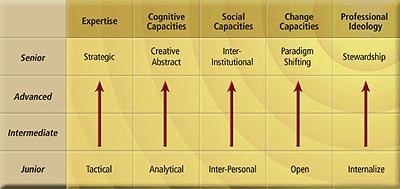
Figure 3 – The Leader Development Framework
Greater emphasis is required now and in the future to develop expertise related to institutional and strategic capabilities (such as strategic planning, inter-militaries transformation initiatives), cognitive capacities (such as ‘meta-cognition’, mental mapping and knowledge creation), social capacities (such as leader flexibility and communication for partnering with international organizations, non-government organizations, and other government departments), change capacities (such as self-development toward self-efficacy through self-awareness, mastering learning organization information-sharing in combat communications), and professional and ethical socialization (such as proactively becoming exemplars, custodians and stewards of the profession). This professional ideology deserves special attention – with professional development covering the stages of moral reasoning and identity development, the balancing of autonomous thinking with appropriate conformity / team membership, ‘professional’ motivation, ethics, and the values, beliefs and expectations articulated in Duty with Honour: The Profession of Arms in Canada.
Conclusions
The overriding and current theme for the CF is transformation. This must be led by a focus on people – members of the profession of arms possessing a strong professional ideology and the leader capacities essential for the challenges the Canadian Forces will face during the 21st Century. A very significant challenge of this new century is the perpetual flux of CF transformation, for which CF leaders must possess the ‘right stuff’, the requisite capacities, acquired through the most effective learning strategies. Professionalism and effective leadership are, indeed, the requisite proficiencies for this transformation effort.
![]()
Robert S. Edwards is Head of the Lessons Learned Section of the Canadian Forces Leadership Institute/CDA.
L. William Bentley, PhD, is Head of the Leadership Theory Section of the Canadian Forces Leadership Institute/CDA.
Robert W. Walker, PhD, is a Research Officer with the Canadian Forces Leadership Institute/CDA.






